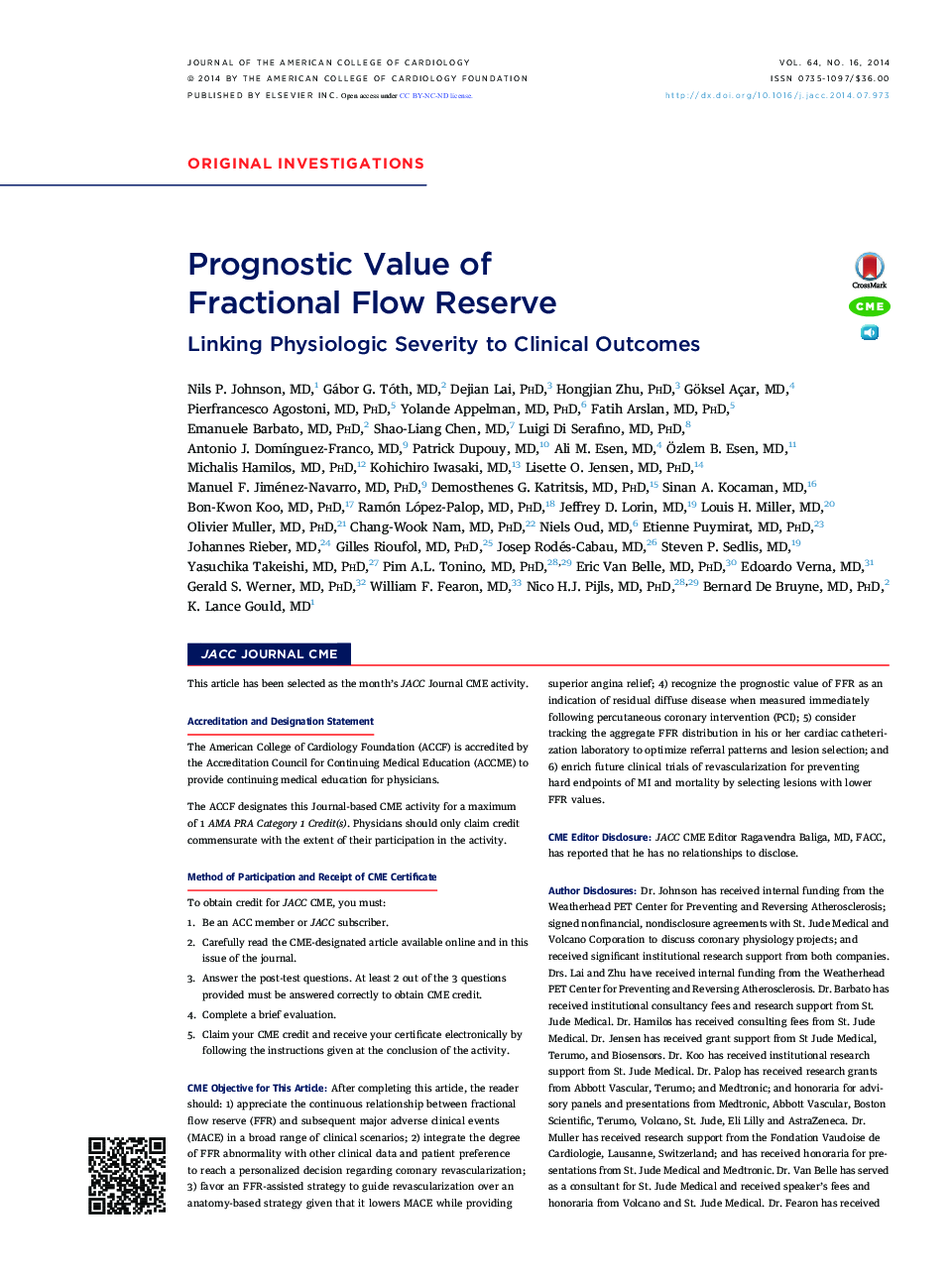| Article ID | Journal | Published Year | Pages | File Type |
|---|---|---|---|---|
| 5982448 | Journal of the American College of Cardiology | 2014 | 14 Pages |
BackgroundFractional flow reserve (FFR) has become an established tool for guiding treatment, but its graded relationship to clinical outcomes as modulated by medical therapy versus revascularization remains unclear.ObjectivesThe study hypothesized that FFR displays a continuous relationship between its numeric value and prognosis, such that lower FFR values confer a higher risk and therefore receive larger absolute benefits from revascularization.MethodsMeta-analysis of study- and patient-level data investigated prognosis after FFR measurement. An interaction term between FFR and revascularization status allowed for an outcomes-based threshold.ResultsA total of 9,173 (study-level) and 6,961 (patient-level) lesions were included with a median follow-up of 16 and 14 months, respectively. Clinical events increased as FFR decreased, and revascularization showed larger net benefit for lower baseline FFR values. Outcomes-derived FFR thresholds generally occurred around the range 0.75 to 0.80, although limited due to confounding by indication. FFR measured immediately after stenting also showed an inverse relationship with prognosis (hazard ratio: 0.86, 95% confidence interval: 0.80 to 0.93; p < 0.001). An FFR-assisted strategy led to revascularization roughly half as often as an anatomy-based strategy, but with 20% fewer adverse events and 10% better angina relief.ConclusionsFFR demonstrates a continuous and independent relationship with subsequent outcomes, modulated by medical therapy versus revascularization. Lesions with lower FFR values receive larger absolute benefits from revascularization. Measurement of FFR immediately after stenting also shows an inverse gradient of risk, likely from residual diffuse disease. An FFR-guided revascularization strategy significantly reduces events and increases freedom from angina with fewer procedures than an anatomy-based strategy.
